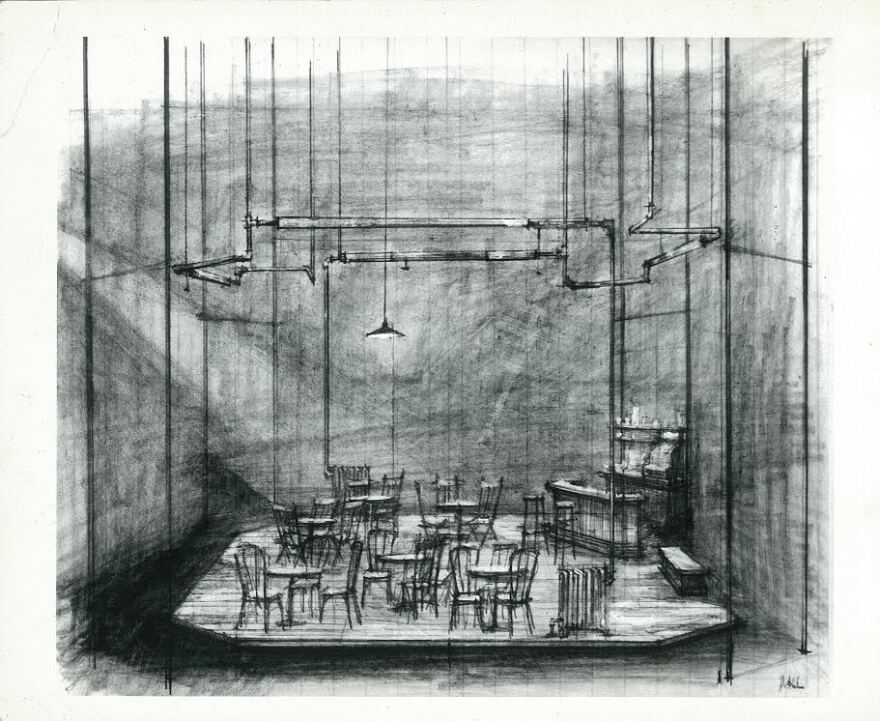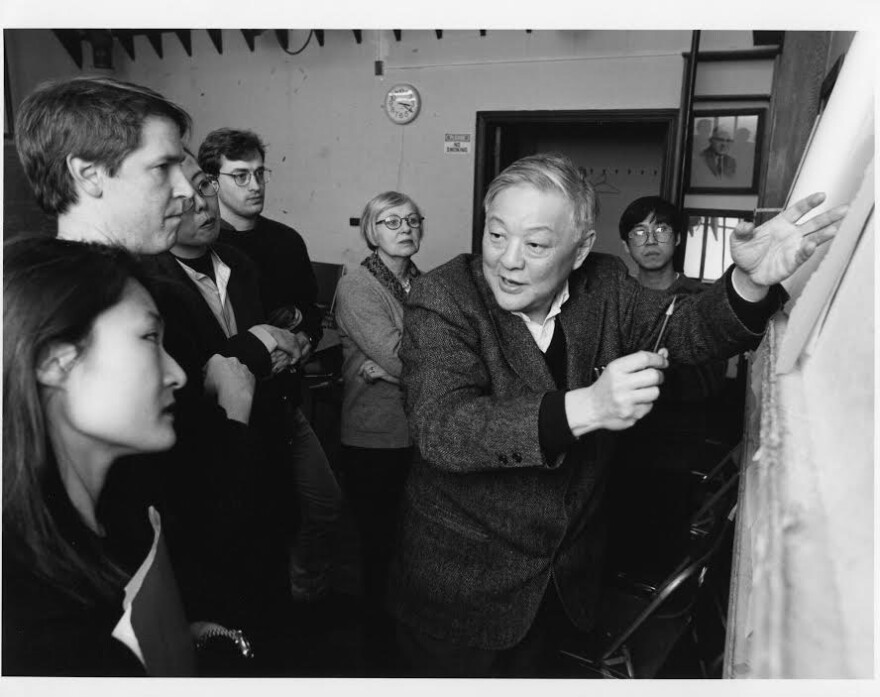At age 83, Ming Cho Lee knows the difference between a world that works and one that doesn’t, certainly when it comes to the stage. For the past six decades, the National Medal of Arts recipient and Tony Award winner has conjured up some of the most memorable scenic worlds of the American theater.

Lee's legendary designs often intermix abstraction and realism, transforming the poetry of words, music, and movement into metaphoric and functional works of scenic art.
At the heart of Lee's creativity is a desire to conceive worlds on stage that help enhance story and character, an approach that grew from his early watercolor training in China, where each painting told a detailed story.
His commitment to his craft and artistry is balanced by another deep passion. Since 1969, Lee has been devoted to the world of education, building a creative home for design students at the Yale School of Drama.
As a faculty member and former Chair of Design, Lee has taught and mentored students of theater, architecture, and design. "I never thought that teaching is a mission to influence young artists to design like me," Lee said about his approach. "The real training…. comes from the environment of working."
Lee physically captures the great works of dramatic literature and classical opera.
Lee is certainly no stranger to hard work. He recently recalled how at age 14, “My mother decided that I was floundering around, not doing anything really seriously. She decided to get me to do Chinese ink painting, landscape painting.” As a result, Lee spent close to three years as a “disciple” to a very well-known Chinese landscape painter.
When he came to America in 1949 to attend Occidental College in California, Lee's talent for watercolors and painting surpassed even the professor's. While he struggled with English and the academics, his artistry and love for working gave him a sense of accomplishment. At Oxy, he soon discovered that the theater department, and not the fine arts, was where his creativity belonged, and the stage would become his creative world.
After graduating, Lee spent a year studying design at UCLA, where he was flunking out. He decided to move to New York with three female friends. "That was a huge adventure for me," he said. "My step-father was a little bit shook up by the idea that I decided to come to New York without a job, and I was going to stay with three American girls!"
The brand new world in New York proved extremely adventurous, and Lee soon earned an apprenticeship with the award-winning set designer Jo Mielziner, a fellow watercolorist.


Lee’s magic has always been in his ability to interpret, daring to bring to life new ideas that physically capture the great works of dramatic literature and classical opera. He has also regularly tackled the abstract physical worlds of both modern dance and ballet. His professional credits, which began in the late 1950s, include designs for Broadway, regional theater, and productions for the Martha Graham Dance Company, the Joffrey Ballet, and the Metropolitan Opera.
Lee's first creative breakthroughs happened in the early years of the New York Shakespeare Festival during the 1960s. Beneath the stars in Central Park, he would test his innovative, three-dimensional concepts, which were built with non-traditional materials: scaffolding, pipes, planks of wood, carved foam, and large-scale visual collage.
Lee's legendary sculptural concept for the 1964 production of "Electra" by Sophocles turned the design world around completely, shifting forever the previous emphasis on two-dimensional painted drops, and toward a more structural, useable three-dimensional landscape.


As he begins his 45th year at Yale University, this tireless teacher-artist keeps on inspiring. "The fire of being an artist is not emphasized enough [in today’s current curricula]," Lee said. "I’m trying my best to get people excited! In some way, that makes teaching very exciting."

In New Haven since 1969, Lee sets the scene for future generations of theater designers to discover their voice, offering them a studio to challenge and refine their methods, and a home to dream up new worlds for the American stage.
In October, Ming Cho Lee: A Life in Design by Arnold Aronson will be released by the publishing wing of Theater Communications Group. The new book chronicles Lee's 60-year career, and features over 500 images that capture his design work for theater, opera, and dance.

